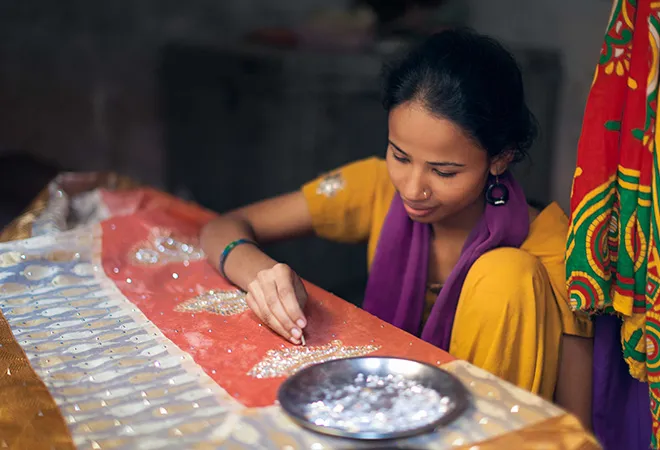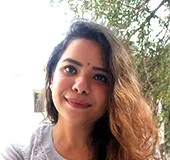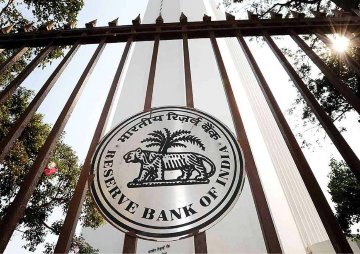
The demographic bulge of the young population across the globe is characterised by the diversity of this group. This new cohort has faced varied challenges, priorities, and situations but despite their increasing numbers, their participation is often neglected. Also, their reduced political participation affects their role in policymaking considering barriers of unemployment, poor health, and lifestyle which are often heard but the execution is done rather poorly. Youth with disabilities; LGBTQ+ youth; migrant, displaced, and refugee youth; youth in conflict and post-conflict situations; and rural youth, among others, often face challenges and barriers to participation specific to their situation.
The youth population (15-29 years) globally stands at 1.8 billion. Out of which, every fifth person (20 percent) resides in India. We, therefore, have one of the highest adolescent and youth population in the world, comprising 40.1 percent of the total population of India—according to the 2011 census. This not only constitutes a critical segment of the entire population but also reflects the socio-political, economic, and demographic developments of the coming times.
Since young people are the most productive workforce of a nation, India is expected to become the 4th largest economy by 2025, contributing about 6 percent to the world GDP. We need to empower youth and enable them to find their rightful place in the community through education, employment, health, skill development, community engagement, and youth participation in politics and governance while including the marginalised youth by giving them more equitable opportunities than adults The high rate of unemployment among the youth due to lack of skills and poverty is a long term challenge for India.
Since young people are the most productive workforce of a nation, India is expected to become the 4th largest economy by 2025, contributing about 6 percent to the world GDP.
Sustainable Development Goals 2030 (SDGs) calls for an inclusive quality education which requires effort to ensure that young people, especially women, have free and equitable access to it. Also, a decent quality of employment and workplace is an uphill aim as many are engaged in low-paid informal sector jobs. Considering the low wages, the competition for new jobs, and the contractual nature of jobs and its effect on mental health, there should be ample opportunities created with a special focus on marginalised and vulnerable youth, youth with disabilities, rural young women where a major aspect of youth education shall be technical and vocational training along with skill development to improve this workforce. An agenda of leaving no youth behind is a call specifically made for India, catering to its ever-increasing issue of unemployment. United Nation’s Rights-Based Approach To Education focuses on availability of free education, resources, and infrastructure; accessibility with non-discriminatory education system removing financial obstacles and including all; acceptability of relevant, culturally appropriate, and good quality schools; adaptability with evolving education system with changing needs of society and challenges such as gender discrimination and issues like poverty. Child marriage, child labour and exploitation, and child malnutrition can be sorted with concerted efforts.
Despite years of developmental efforts, young women continue to face a particularly challenging set of educational, employment, and health barriers as our patriarchal society robbed them of their health and education during the initial years of their lives. Lack of access to toilets, menstrual hygiene, early marriage, and pregnancy leads to poor quality of life and health. The vulnerable and the marginalised young females struggling with gender-based violence undermine overall health and well-being at all levels of development. The United Nations in 2015 estimated that one-third of women worldwide have experienced physical and/or sexual violence from an intimate partner or sexual violence from a non-partner, at some point in their lives.
Despite years of developmental efforts, young women continue to face a particularly challenging set of educational, employment, and health barriers as our patriarchal society robbed them of their health and education during the initial years of their lives. Lack of access to toilets, menstrual hygiene, early marriage, and pregnancy leads to poor quality of life and health
Achieving Universal Health Coverage (UHC) by 2030 aiming at youth health and well-being which are the key drivers of sustainable development around the world, requires an inclusive partnership between all the stakeholders as inter-sectoral coordination for their empowerment. In efforts to end the epidemic of AIDS—where India stands as the third-largest HIV epidemic in the world—along with tuberculosis, malaria, and other neglected tropical diseases, the access to sexual and reproductive healthcare services and quality healthcare, especially to young women, have also gained importance along the way. There is a need to strengthen the prevention and treatment of substance use disorders among the youth along with behavioural change for road safety. India also has the lowest healthcare spending in the world despite having the highest youth population which can be a productive workforce in accelerating the development our economy. Another concern is the undermining of mental health issues in India. According to the National Crime Records Bureau Report titled 'Accidental Deaths and Suicides in India’, more than 90,000 young adults died by suicide in 2019 making it the highest in South-East Asia.
Way forward
There are a number of obstacles including lack of services, lack of awareness, myths, misconceptions, stigma, and various social-cultural barriers in combating the challenges of youth health. A robust public health approach is needed that is focused on controlling the risk factors, health promotion, and prevention and treatment The health issues concerning alcohol, substance abuse and its dependence is a major concern and requires awareness and education of all the people involved— peers, teachers, and parents—and also requires limiting its access in the open market with strict compliance to COTPA Act. Aware youth can overcome many challenges of the present times. Young population in schools and colleges need to be targeted using community-based interventions with an aim to bridge the knowledge gaps and counter the aforementioned barriers so as to achieve health literacy among the youth.
Capacity building as well as skill development of the youth population will mark an initiation of the much required empowerment. Also, politically empowered youth will not only acquire knowledge and skills for their personal growth but also promote national integrity by developing leadership and bringing about drastic changes in policymaking while catering to their rights and duties for the nation. To ensure social empowerment of youth to overcome challenges like early marriage, women empowerment, their education, and financial stability need a special mention in the youth policy together with focussing on its implementation and execution on ground-level.
To ensure social empowerment of youth to overcome challenges like early marriage, women empowerment, their education, and financial stability need a special mention in the youth policy together with focussing on its implementation and execution on ground-level
The highly regarded and promising targets of SDGs and their role in uplifting youth of the world are definitely a source of protection and engagement for young people.. A hope of a bright future for young minds lies ahead!
The views expressed above belong to the author(s). ORF research and analyses now available on Telegram! Click here to access our curated content — blogs, longforms and interviews.




 PREV
PREV


